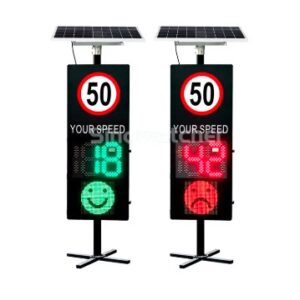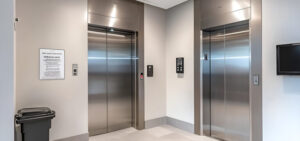Excessive speeding continues to be a major contributor to road accidents worldwide. To address this, solar radar speed signs have become a sustainable and budget-friendly option for improving road safety.These signs are not only energy-efficient but also highly effective in modifying driver behavior. Below, we explore the top benefits of using solar radar speed signs, supported by data, comparisons, and professional insights.
Table of Contents
ToggleWhat Makes Solar Radar Speed Signs Stand Out?
Unlike traditional speed monitoring systems that rely on grid electricity or require frequent manual oversight, solar radar speed signs operate autonomously. They use solar panels to harvest renewable energy, making them ideal for both urban and rural areas. Their design integrates a radar sensor to detect oncoming vehicle speed and display it instantly on an LED panel, alerting drivers to adjust their speed.
Key Features at a Glance:
| Feature | Solar Radar Speed Signs | Traditional Speed Signs |
| Power Source | Solar energy (renewable) | Grid electricity |
| Installation Cost | Moderate (one-time) | Higher (with wiring) |
| Maintenance Requirement | Minimal | Moderate to High |
| Visibility (Day/Night) | High (LED display) | Moderate (static signs) |
| Environmental Impact | Low (zero emissions) | Higher (power demand) |
Enhanced Road Safety Through Real-Time Feedback
1. Immediate Driver Awareness
One of the most significant benefits of a solar radar speed sign is its ability to provide instant feedback to drivers. Studies have shown that drivers reduce their speed by an average of 5–9 km/h when they see their current speed displayed in real-time.
2. Reduction in Speeding Incidents
A report from the National Highway Traffic Safety Administration (NHTSA) indicates that radar speed signs can cut speeding violations by up to 30% in the first three months after installation. Solar-powered variants achieve similar results without additional operational costs.
Sustainability and Cost Savings Combined
1. Lower Operational Costs
Because they rely on solar energy, these devices eliminate electricity bills. For municipalities or private communities, this results in long-term savings.
2. Eco-Friendly Solution
A single solar radar speed sign can save approximately 500 kWh of electricity annually compared to grid-powered signs. This translates to a reduction of nearly 400 kg CO₂ emissions per sign per year.
Versatility in Different Settings
Solar radar speed signs are highly adaptable:
- Urban Areas– Combat speeding in school zones and residential streets.
- Highways– Ideal for construction zones where temporary speed enforcement is critical.
- Rural Roads– Perfect where power infrastructure is limited.
This flexibility makes them superior to fixed static signs, which lack the dynamic engagement drivers need.
Key Advantages Over Alternative Technologies
1. Radar Signs vs. Static Speed Signs
| Criteria | Solar Radar Speed Signs | Static Speed Signs |
| Effectiveness | High (interactive feedback) | Low (no driver response) |
| Power Requirements | Solar-powered | None |
| Maintenance | Low | Reduced |
| Driver Behavior Impact | Proven reduction in speed | Minimal effect |
2. Radar Signs vs. Speed Cameras
| Criteria | Solar Radar Speed Signs | Speed Cameras |
| Cost | Low to moderate | High (equipment & fines) |
| Privacy Concerns | None | High (recording involved) |
| Enforcement | Preventive (non-punitive) | Punitive |
Practical Considerations Before Installation
Before investing in a solar radar speed sign, consider:
- Average Traffic Flow:Best suited for areas with moderate traffic.
- Sunlight Availability:Works optimally with 5+ hours of direct sunlight
- Pole Height and Sign Size:Adjust according to road type for maximum visibility.
Why More Communities Are Adopting Them
In cities like San Francisco and London, the adoption of solar radar speed signs has grown by 20% annually over the past five years. Residents report feeling safer, and local councils have observed a measurable decline in accidents within monitored zones.
Summary of Benefits
To recap, solar radar speed signs provide:
✅ Real-time speed feedback
✅ Reduced speeding and accident rates
✅ Zero energy cost with solar power
✅ Environmentally friendly operation
✅ Lower maintenance and installation efforts
Conclusion
A solar radar speed sign is more than just a traffic management tool—it’s a proactive investment in road safety and sustainability. Whether for city streets, school zones, or private properties, these signs deliver proven benefits that make roads safer for everyone. With rising energy costs and growing emphasis on renewable solutions, their relevance is only set to increase.
0




